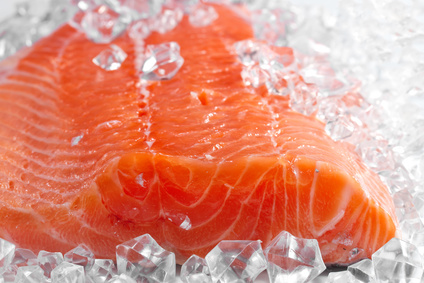by
Stepy —
September 12, 2019
- Fish and shellfish are a very important part of our diets, because of their high protein content and healthy fats including omega-3 fatty acids, which have antioxidant effects. A balanced diet should contain fish as they contribute to heart health.
- Women and young children in particular should include fish or shellfish in their diets due to the many nutritional benefits.
- However, almost all fish and shellfish contain traces of mercury.
- What is mercury and methylmercury?
- Mercury occurs naturally in the environment and is released into the air through pollution.
- Mercury can accumulate in oceans and is turned into methylmercury in the water.
- It is this type of mercury that can be harmful to unborn babies and young children.
- Fish absorb the methylmercury as they feed in these waters. It builds up more in bigger fish and depends on what the fish eat. Therefore the level of mercury in fish varies.
- Fish with higher levels of mercury can be harmful.
- For most people, the risk from mercury by eating fish and shellfish is not a health concern. Yet, some fish and shellfish contain higher levels of mercury that may harm an unborn baby or young child’s developing nervous system.
- Therefore, the Food and Drug Administration (FDA) and the Environmental Protection Agency (EPA) are advising “women who may become pregnant, pregnant women, nursing mothers, and young children to avoid some types of fish and eat fish and shellfish that are lower in mercury.”
- Here are 3 safety tips from the FDA:
- 1. Do not eat the following:
- Shark
- Swordfish
- King Mackerel
- Tilefish
- They contain high levels of mercury
- 2. Eat up to 12 ounces (2 average meals) a week of a variety of fish and shellfish that are lower in mercury.
- Five of the most commonly eaten fish that are low in mercury are:
- 1. Shrimp
- 2. Wild alaskan salmon
- 3. Pollock
- 4. Catfish
- 5. Canned light tuna ( NOT albacore “white”) in BPA free cans
-
- Albacore (“white”) tuna has more mercury than canned light tuna.
- 3. Check local advisories about the safety of fish caught by family and friends in your local lakes, rivers, and coastal areas.
- If no advice is available, eat up to 6 ounces (one average meal) per week of fish you catch from local waters, but don’t consume any other fish during that week.
- Follow these same recommendations when feeding fish and shellfish to your young child, but serve smaller portions.
-
- Here is a list of fish and shellfish with low mercury levels:
- Anchovies
- Butterfish
- Catfish
- Clam
- Cod
- Crab (Domestic)
- Crawfish
- Croaker (Atlantic)
- Flounder
- Haddock
- Hake
- Herring
- Mackerel Atlantic)
- Mullet
- Oyster
- Perch Ocean
- Pollock
- Wild Alaskan salmon
- Wild Salmon Canned
- Sardine
- Scallop
- Shad (American)
- Shrimp
- Squid (Calamari)
- Tilapia
- Trout (Freshwater)
- Whitefish
- Whiting
- FOR THE FISH CONSUMPTION ADVISORIES.
- For the antioxidant effects of omega-3s.
- Note: The content on our website is for educational purposes only. Please consult your health practitioner or a qualified expert.
- REFERENCES:
- 1. “What You Need to Know About Mercury in Fish and Shellfish.” FDA.gov. U.S Food and Drug Adminstration, Mar. 2004. Web. 10 Mar. 2014.
- 2. “What You Need to Know about Mercury in Fish and Shellfish.” EPA.gov. United States Environmental Protection Agency, Mar. 2004. Web. 09 Mar. 2014.
- 3. ” Mercury Levels in Commercial Fish and Shellfish“. (1990-2010). FDA.gov. U.S Food and Drug Adminstration, April. 2013. Web. 16 Mar. 2014.


















